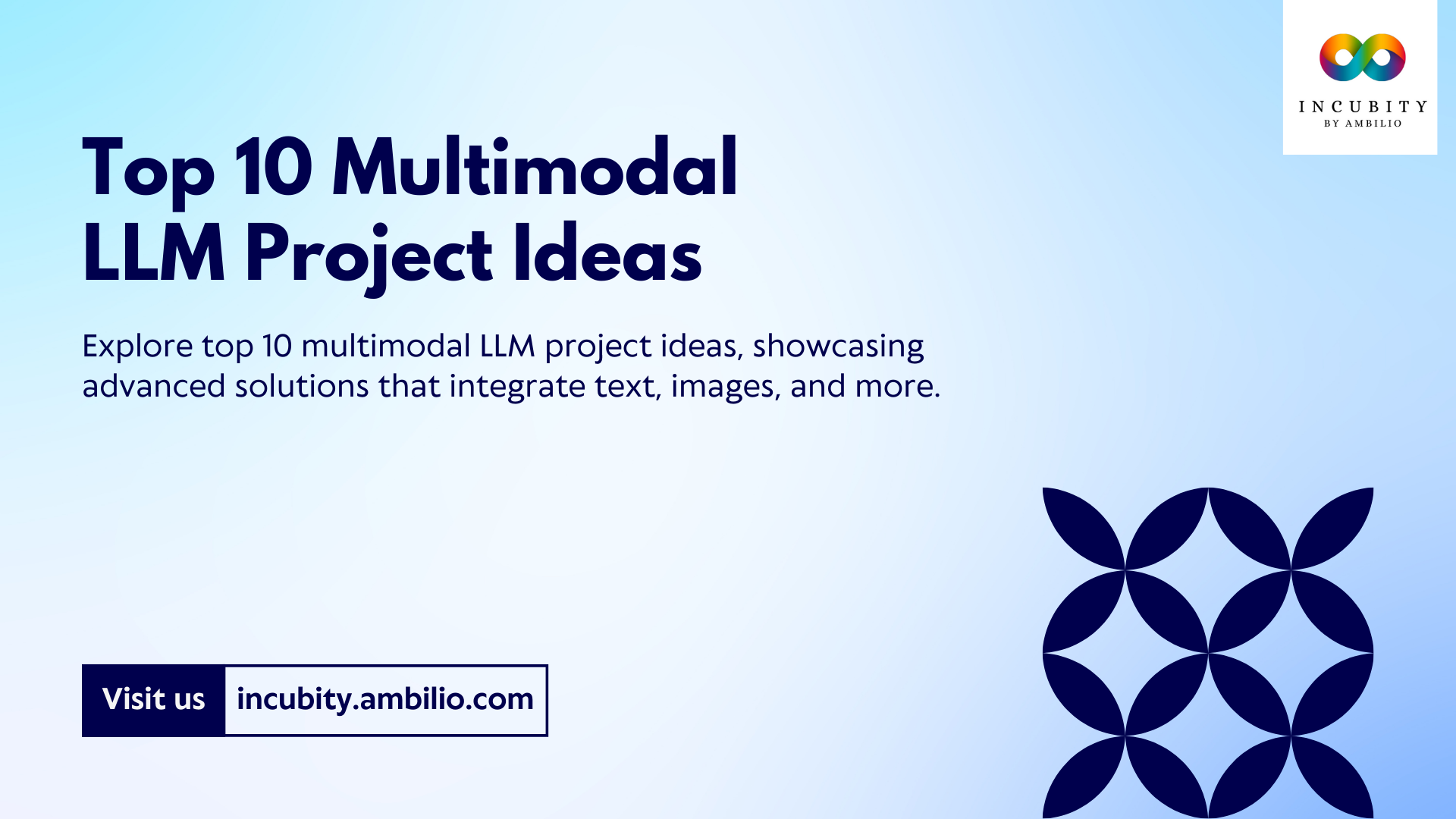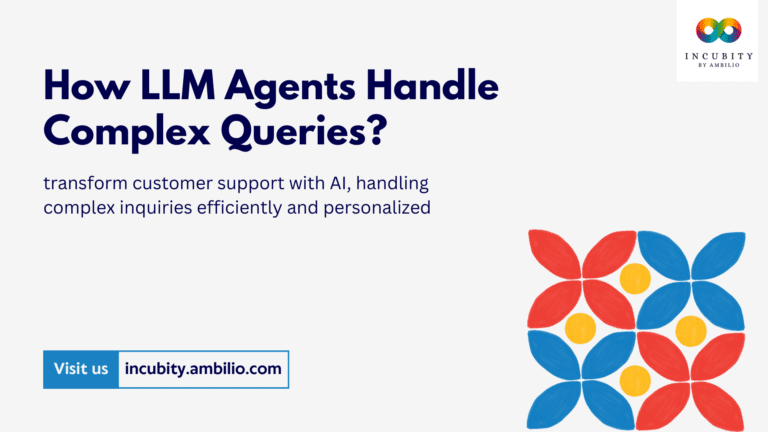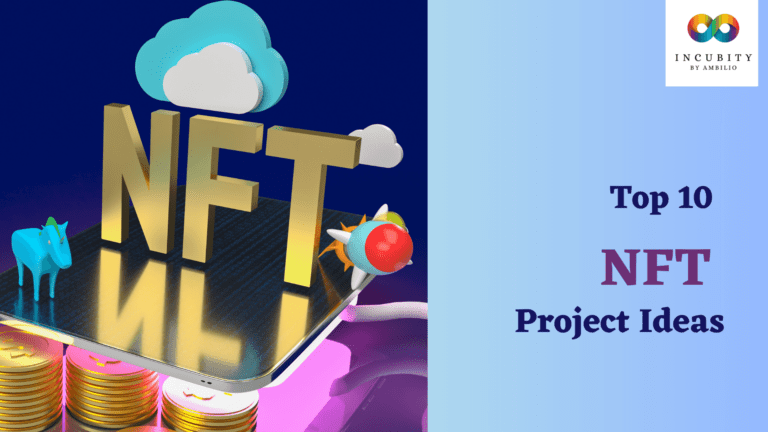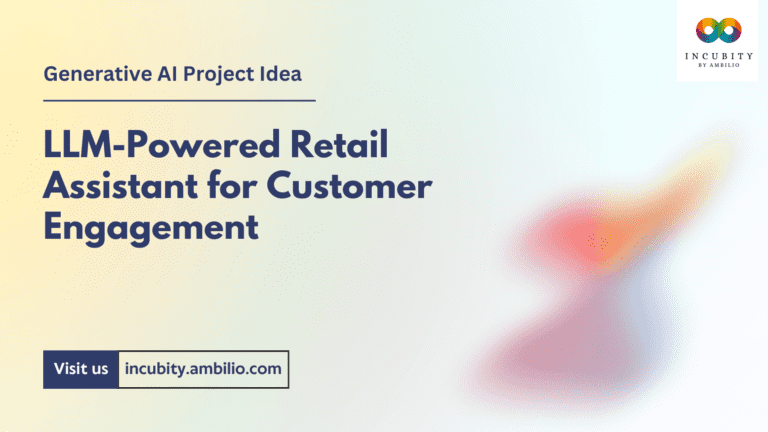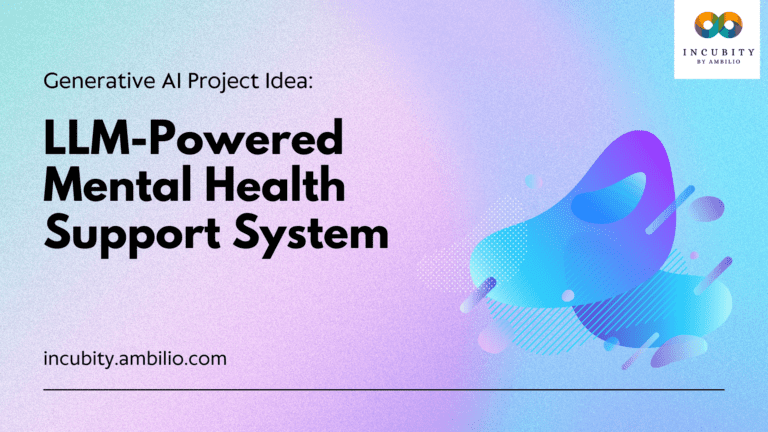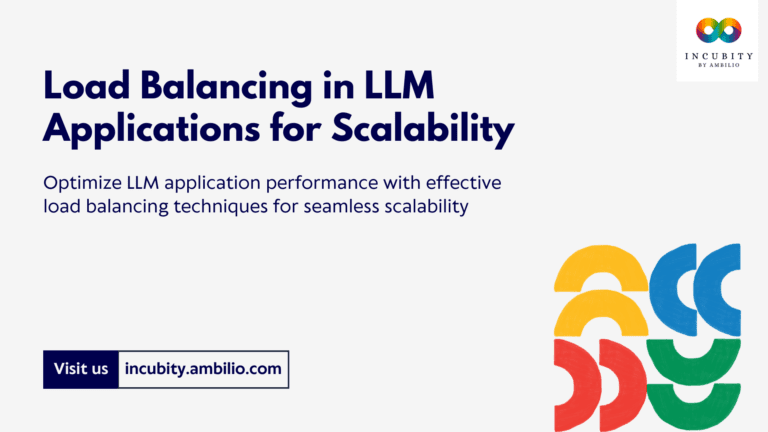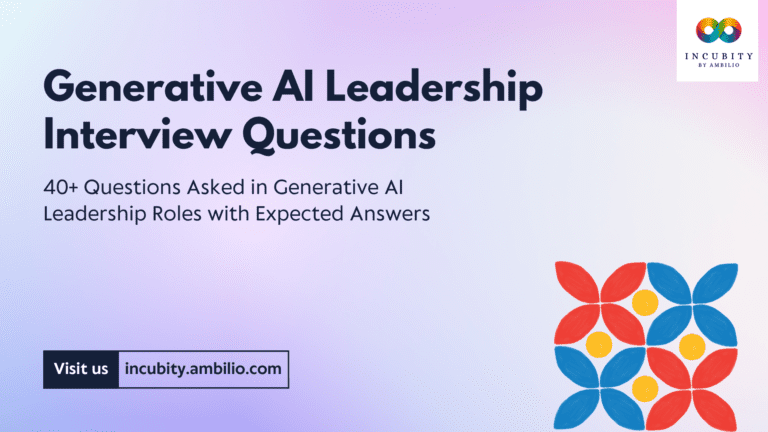Multimodal large language models (LLMs) are revolutionizing artificial intelligence by processing and generating content from various data types, such as text, images, audio, and video. Unlike traditional models that handle only one type of data, multimodal LLMs integrate multiple modalities to enhance their understanding and generate more comprehensive, contextually relevant responses. Below, we explore ten innovative Multimodal LLM project ideas utilizing multimodal LLMs, detailing the problems they address, the technical requirements, and step-by-step implementation guidelines.
Multimodal LLM Project Ideas
Let us delve into 10 exciting multimodal LLM project ideas that will have very high business value and usefulness in real-world problems.
1. Multimodal Creative Writing Assistant
Overview: Creative writers often struggle to generate content that is both imaginative and coherent, especially when trying to align their writing with specific visual or thematic elements. A multimodal creative writing assistant can provide inspiration and structure by generating stories, poems, or scripts based on text and image prompts.
Technical Requirements:
- Multimodal LLM (e.g., GPT-4, DALL-E, LLaVA)
- Front-end web development tools (HTML, CSS, JavaScript)
- Backend development (Python, Flask/Django)
- Text processing libraries (NLTK, spaCy)
Implementation Steps:
- Model Fine-tuning: Fine-tune a multimodal LLM like GPT-4 or DALL-E on a diverse corpus of literature and creative writing examples. This helps the model learn various writing styles and narrative structures.
- Web Interface Development: Create a user-friendly web interface where users can input text and images as prompts. This interface should support features like drag-and-drop image uploads and real-time text input.
- Model Integration: Integrate the fine-tuned model with the web interface, enabling it to generate creative content based on the prompts. The output should be displayed in real-time, with options for users to refine or regenerate content.
- Feedback Mechanism: Implement a feedback system where the model suggests improvements in writing style, grammar, and narrative structure, helping users enhance their work iteratively.
2. Multimodal Question Answering System
Overview: Traditional question-answering systems are limited to text-based inputs and outputs, which can be inadequate for complex queries involving images or documents. A multimodal question-answering system can process questions involving multiple data types and provide more accurate, contextually rich answers.
Technical Requirements:
- Multimodal QA model (e.g., VizWiz)
- Natural language processing tools (Hugging Face Transformers, spaCy)
- Document and image processing libraries (OpenCV, PyPDF2)
- Chatbot framework (Rasa, Microsoft Bot Framework)
Implementation Steps:
- Model Setup: Start by selecting and fine-tuning a multimodal QA model like VizWiz. Fine-tune it using a dataset that includes text, images, and document-based questions.
- User Interface Design: Develop a chatbot interface that allows users to submit questions in various formats, such as text, images, or documents. Ensure that the interface is intuitive and accessible.
- Integration with Knowledge Base: Connect the QA model to a knowledge base containing relevant documents and images. This will help the model retrieve and process information effectively.
- Conversation Logic: Implement multi-turn conversation logic to enable the system to ask follow-up questions for clarification and provide detailed, multi-part answers.
3. Multimodal Summarization Tool
Overview: Summarizing information from a mix of text, images, and video content can be challenging and time-consuming. A multimodal summarization tool can automatically extract key points from diverse content, making information more accessible and easier to digest.
Technical Requirements:
- Multimodal summarization model (e.g., BLIP-2)
- Front-end development tools (React.js, Vue.js)
- Video processing libraries (OpenCV, FFmpeg)
- Translation APIs (Google Translate API)
Implementation Steps:
- Model Selection: Choose a multimodal summarization model like BLIP-2 and fine-tune it on datasets that combine text, images, and video summaries.
- User Interface Creation: Develop a web-based interface where users can upload documents, images, and videos. The interface should allow users to specify summary preferences, such as length and focus.
- Backend Integration: Integrate the fine-tuned model with the backend to process user-uploaded content and generate summaries. The summaries should be customizable based on user preferences.
- Multilingual Support: Implement translation capabilities using APIs like Google Translate to offer summaries in multiple languages, making the tool accessible to a global audience.
4. Multimodal Explainable AI Assistant
Overview: Understanding the decision-making process of AI models, especially in high-stakes applications, is crucial for trust and transparency. A multimodal explainable AI assistant provides natural language explanations and visualizations of model decisions, making AI more transparent and understandable.
Technical Requirements:
- Explainability frameworks (SHAP, LIME)
- Multimodal LLM (e.g., GPT-4)
- Visualization libraries (Matplotlib, Plotly)
- Backend development (Flask, Django)
Implementation Steps:
- Model Training: Fine-tune a multimodal LLM like GPT-4 to generate natural language explanations of AI model decisions.
- Integration with Explainability Tools: Combine the LLM with explainability frameworks like SHAP or LIME to analyze model internals and provide insights into decision-making processes.
- Visualization Development: Develop visualizations that display model inputs, outputs, and the reasoning behind decisions. Use libraries like Matplotlib or Plotly for creating interactive graphs and charts.
- User Interface: Build an interface where users can input queries or models, receive explanations, and visualize the decision-making process.
5. Multimodal Dialogue System for Customer Support
Overview: Customer support often requires understanding complex issues described through text and images. A multimodal dialogue system can interpret customer queries involving both modalities and provide accurate troubleshooting guidance or escalate issues to human agents when necessary.
Technical Requirements:
- Multimodal dialogue model (e.g., MERLOT)
- Chatbot framework (Rasa, Microsoft Bot Framework)
- Image processing libraries (PIL, OpenCV)
- Integration with customer support tools (Zendesk API, Salesforce API)
Implementation Steps:
- Model Training: Train a multimodal dialogue model like MERLOT on customer support datasets that include both text and images. This will enable the model to understand and respond to multimodal queries.
- Chatbot Interface: Develop a chatbot interface that allows customers to describe their issues and upload relevant images. Ensure the chatbot can handle multi-turn conversations.
- Troubleshooting Logic: Implement logic to guide customers through troubleshooting steps based on the model’s interpretation of the issue. Integrate a decision tree to escalate complex issues to human agents with the necessary context.
- Ticketing System Integration: Connect the system to customer support ticketing systems like Zendesk or Salesforce to track issues and resolutions efficiently.
6. Multimodal Recommendation System
Overview: Traditional recommendation systems often rely on text-based user preferences, limiting their effectiveness. A multimodal recommendation system can incorporate text, images, and audio inputs to provide more personalized and accurate recommendations.
Technical Requirements:
- Multimodal recommendation model (e.g., CLIP)
- Data collection tools (web scraping, user surveys)
- Backend development (Node.js, Python)
- Recommendation engine framework (LensKit, Mahout)
Implementation Steps:
- Data Collection: Collect user preference data across various modalities, such as text reviews, images of liked products, and preferred audio tracks. Use web scraping tools and user surveys for data collection.
- Model Training: Train a multimodal recommendation model like CLIP on the collected data to understand user tastes and item features. Ensure the model can process and integrate inputs from all modalities.
- Recommendation Generation: Develop an algorithm to generate personalized recommendations based on the model’s understanding of user preferences. Provide natural language explanations for each recommendation to enhance transparency.
- Feedback Loop: Implement a feedback mechanism that allows users to refine their recommendations, improving the system’s accuracy over time.
7. Multimodal Accessibility Tool
Overview: Accessibility for people with disabilities, such as those with visual impairments, is often overlooked in digital content. A multimodal accessibility tool can generate descriptions, captions, and transcripts, making content more accessible.
Technical Requirements:
- Multimodal models for accessibility (e.g., VL-T5, M2M100)
- Accessibility frameworks (ARIA, WCAG compliance tools)
- Audio processing libraries (Librosa, Pydub)
- Translation APIs (Google Translate API)
Implementation Steps:
- Model Integration: Use models like VL-T5 for image captioning and M2M100 for translation to build an accessibility tool that generates descriptions, captions, and transcripts.
- Interface Development: Create an interface for users to upload content such as images, videos, and documents. The tool should automatically generate accessible content in multiple modalities.
- Customization Options: Provide options for users to customize the generated content, such as adjusting the level of detail in descriptions or selecting preferred languages for translation.
- Compliance Checking: Ensure the generated content meets accessibility standards like WCAG. Use tools to verify compliance and provide feedback for improvement.
8. Multimodal Anomaly Detection System
Overview: Monitoring and detecting anomalies in systems that produce multimodal data, such as industrial equipment with text logs and visual outputs, is complex. A multimodal anomaly detection system can identify and alert on unusual patterns across different data types.
Technical Requirements:
- Multimodal anomaly detection models (e.g., Image-Text LSTM, Multimodal Variational Autoencoders)
- Data processing tools (Pandas, NumPy)
- Visualization libraries (Matplotlib, Seaborn)
- Notification frameworks (Twilio API, Slack API)
Implementation Steps:
- Data Collection: Gather multimodal data from the target system, including text logs, images, and sensor readings. Ensure data is properly labeled for training.
- Model Training: Train a multimodal anomaly detection model using techniques like LSTMs or variational autoencoders to learn normal patterns and identify deviations.
- Anomaly Detection: Implement real-time anomaly detection using the trained model. The system should monitor incoming data, compare it to learned patterns, and flag any anomalies.
- Alert System: Integrate an alert system that sends notifications via SMS or Slack when anomalies are detected, including visual and textual descriptions of the issue.
9. Multimodal Interactive Learning Platform
Overview: Traditional e-learning platforms often rely on text and video, which can limit engagement and effectiveness. A multimodal interactive learning platform can enhance learning by integrating text, images, audio, and interactive simulations.
Technical Requirements:
- Multimodal LLM (e.g., GPT-4, VisualBERT)
- E-learning frameworks (Moodle, Open edX)
- Simulation tools (Unity, Unreal Engine)
- Content management systems (WordPress, Drupal)
Implementation Steps:
- Platform Development: Build a learning platform using e-learning frameworks like Moodle or Open edX. Integrate simulation tools for interactive content.
- Content Creation: Use a multimodal LLM to generate educational content that includes text explanations, images, and audio. Develop interactive simulations to reinforce learning.
- Adaptive Learning Paths: Implement adaptive learning paths that adjust content based on the learner’s progress and preferences, ensuring a personalized experience.
- Assessment Tools: Develop assessment tools that include quizzes, interactive exercises, and projects. Use multimodal LLMs to provide feedback and guide learners through challenges.
10. Multimodal Medical Diagnosis Assistant
Overview: Medical professionals often rely on text-based patient records and visual data like X-rays or MRIs, making accurate diagnosis challenging. A multimodal medical diagnosis assistant can analyze both text and image data to provide comprehensive diagnostic support.
Technical Requirements:
- Multimodal medical models (e.g., MedCLIP, BioViL)
- Medical imaging libraries (SimpleITK, OpenCV)
- Natural language processing tools (spaCy, Hugging Face Transformers)
- Integration with Electronic Health Record (EHR) systems (FHIR API, HL7 API)
Implementation Steps:
- Model Training: Train a multimodal model like MedCLIP on medical datasets that include patient records and imaging data. Ensure the model can interpret and integrate data from different sources.
- Integration with EHR: Connect the model to EHR systems to access patient records and medical images in real-time. Ensure compliance with healthcare data standards like FHIR.
- Diagnostic Support: Develop a system that provides diagnostic suggestions based on the model’s analysis. The system should highlight key areas of concern in images and correlate them with patient history.
- User Interface: Create an intuitive interface for medical professionals to input data, view analysis results, and interact with the assistant. Include features like detailed visual explanations and recommendations for further tests or treatments.
Final Words: Multimodal LLM Project Ideas
These ten multimodal LLM project ideas offer a range of innovative solutions across various domains. By integrating text, image, and other data types, these projects can solve complex problems more effectively than traditional models. Implementing these projects requires careful selection of models, tools, and frameworks, but the potential benefits in terms of enhanced capabilities and user experiences are significant. Whether for creative writing, customer support, or medical diagnostics, multimodal LLMs represent the future of AI-driven solutions.

